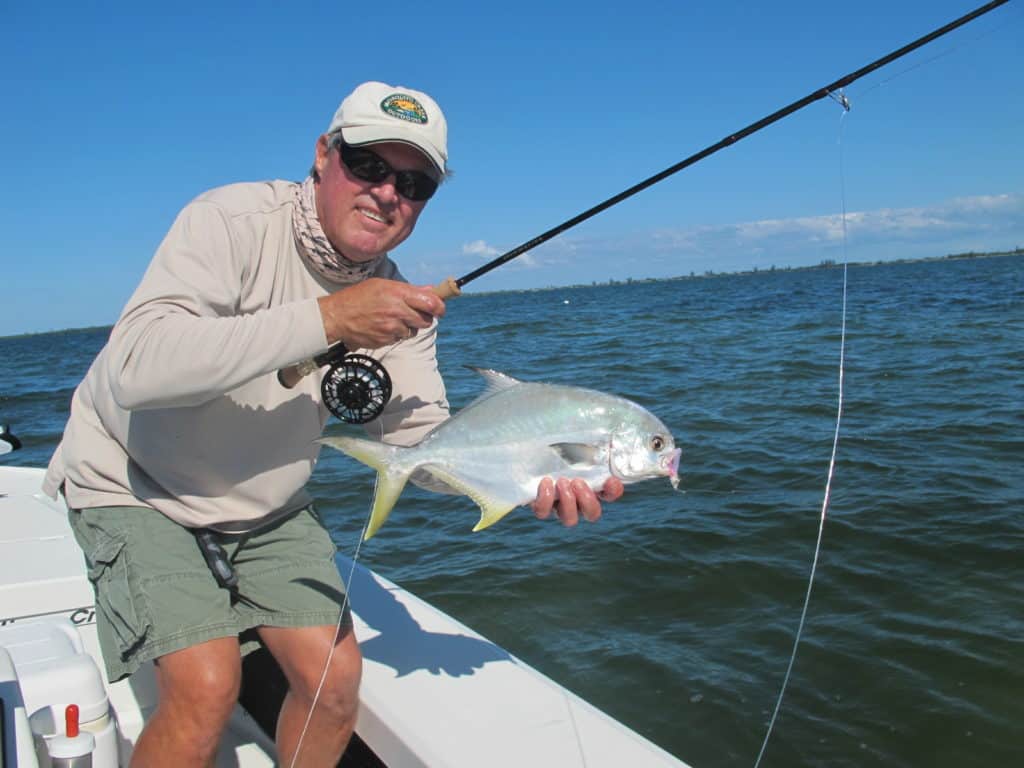
I had just moved to Stuart from Miami, when I went to a local bridge catwalk and joined many other anglers fishing shoulder to shoulder during what was rumored to be a hot pompano bite. We were all casting jigs in hopes of nailing a few fatties, when I hooked a fish that fought so hard that I assumed it was a jack crevalle. That is, until I saw its gleaming mercury-colored flanks at the surface and realized it was a 5-pound pomp.
It was that 20-inch-plus slab that made me a big fan and sparked in me the desire to target pompano with flies. Shortly after immersing myself in this new pursuit, I quickly discovered that pomps are not just an incidental catch, they can be successfully targeted with the fly rod. And success can be celebrated with a sumptuous dinner!
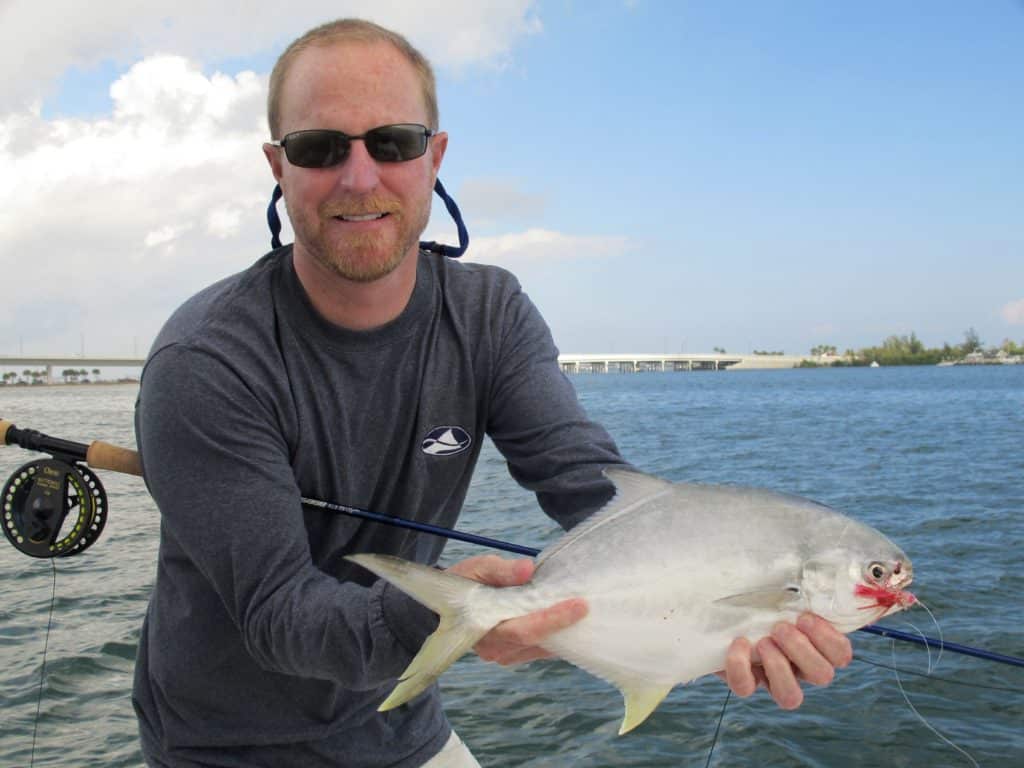
THE MIGRATION
Pompano range from the Carolinas to Florida, and all the way to Texas, but the fishery is most developed in the Sunshine State, where residents and winter visitors enthusiastically target them in the surf, in bays and coastal rivers, as well as the Intracoastal Waterway. While many of the fish reside in Florida’s Panhandle and up the Southeast Atlantic coast in the summer, they move south en masse as water temps plummet below the 70 degree mark. While considerably more challenging than fishing for them in the surf with natural bait or jigs, pompano are sight-fished by fly rodders over light-sand bottom. This practice is particularly productive in Florida Panhandle beaches and a number of sand bars throughout the southeast coast of the state.
By the time strong cold fronts reach Florida, the bulk of the pompano will have moved well south of Tampa Bay on the Gulf Coast, and roughly down to Vero Beach on the Atlantic side. The ideal water temperature is above 68 degrees. I have experienced mass evacuations once the temp falls below 65 where I fish, from Ft. Pierce to Stuart, and have had to follow the fish south to the Palm Beaches, where the water was still slightly warmer.
Early South Florida pompano in October are below the legal size (11-inch at the fork), but within a couple of weeks, bigger fish move in. It’s actually rare to see those little surf pomps on inside waters. They usually fall in the 13- to 16-inch-length class, with the occasional 17- to 20-inch, 3- to 5-pound slab that will burn some serious drag on the initial run of 25 yards or more.
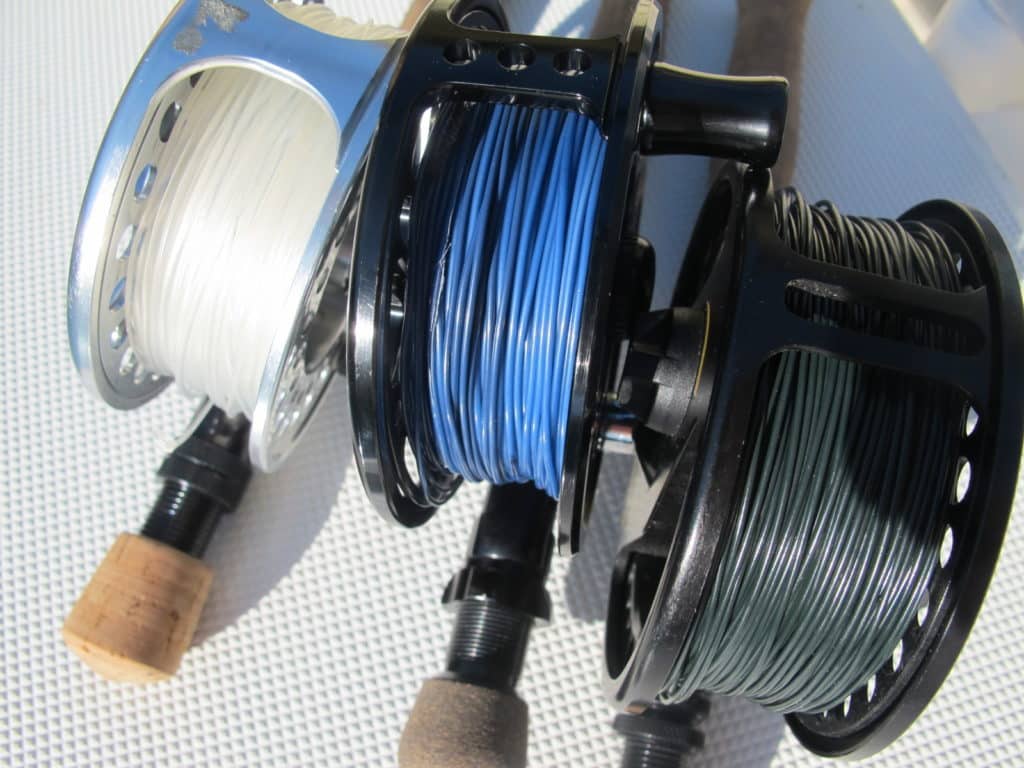
RECOMMENDED TACKLE
The first thing I recommend is to be practical about pompano fishing. There will be some situations that just aren’t conducive to using fly gear. You can’t just head out with a floating line and expect to catch them in depths greater than 5 feet or so, especially in a strong current or with a stiff wind blowing onshore. The good news is that, despite the concentrations of fish found in areas with heavy current — like bridges, inlets and passes, and overshallow, inshore wrecks (in places like Florida Bay and Tampa Bay) — pompano love to forage in the shallows, often over shallow shell bars, oyster bars and grass flats, where your chances of scoring increase exponentially, even using a floating line.
Nevertheless, I prefer a clear intermediate line, it’s much more versatile, and my favorite rod is an 8-weight or even a 9. It is not overkill because the best flies for pompano are weighted, and you often fish on windy winter and spring days, when the fish are most abundant along both Florida coasts. At times, lighter rods may be more fun, but they often limit you.
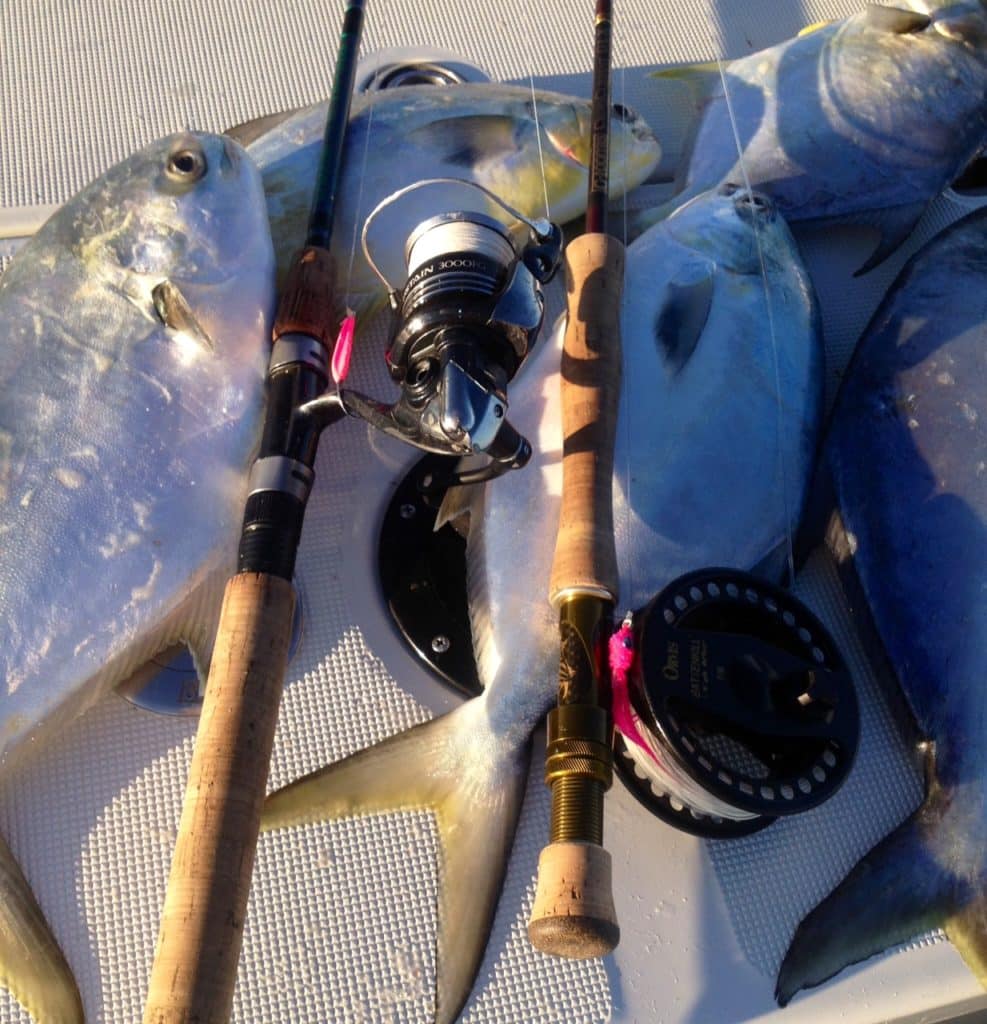
With a sinking line, whether intermediate or a faster sink-rate (best for waters 5 feet deep or more), you can easily cast a short 3- to 6-foot leader. I typically loop on a level, 5-foot leader of 20- to 25-pound fluorocarbon. Pomps are not particularly leader-shy, and this test holds up against shell bottom and the raspy lips of ladyfish and jacks that frequent the places where pompano gather.
If you find the fish in deeper zones (either by prospecting with a jig or by seeing pompano skip in your wake), use a rod rigged with a medium-rate sinking line. Make a long cast, preferably ahead of your drifting boat, and allow the fly to sink for a 10-count or so, before making erratic strips, allowing the fly to sink, and repeating the process. I like to fish my fly in the bottom half of the water column whenever possible. When I hook up, I put down my Power-pole, but you can also drop anchor. Otherwise, go back and drift the same zone.
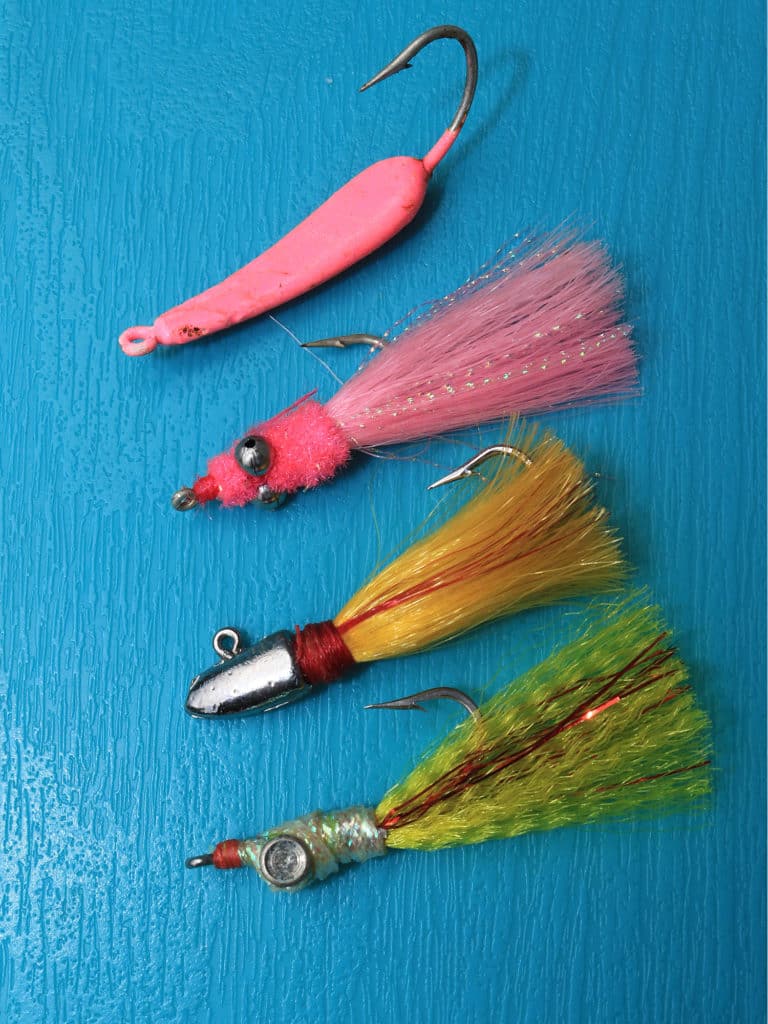
POMPANO FLY PATTERNS
The first pomps I caught fell for traditional Nylure jigs, and later the Goofy Jig, or one of the many facsimiles available. Though a few local fly fishers played tried casting bonefish crab patterns and sand flea lookalikes, that made little sense to me because they look nothing like the jigs that were the hottest lure. So I tied up a few Nylure imitations, using yellow Super Hair for the tail and silver Mylar braid to build up the head of the flies. The final product was a perfect copy of the silver-headed jig, right down to the red thread collar. I weighted the flies with lead wire for a fast sink rate, and they absolutely murdered the pompano! Of course, everything else ate them too — from trout to jacks, lookdowns, and even small snapper.
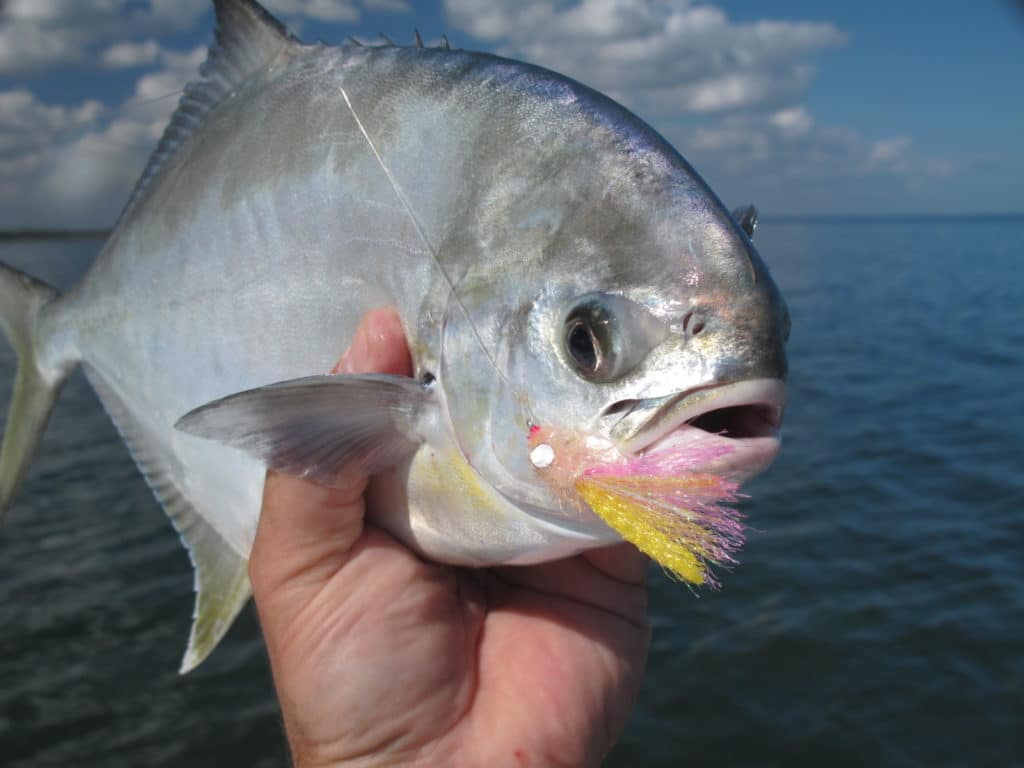
Now I tie a series of jig-imitating flies I call Pompano Plus, named so because they take multiple species, like jigs do. The synthetic fibers allow for a fast sink-rate and shed water well on the backcast. I tie them with various sizes of lead dumbbell eyes to use in different depths and currents. Sometimes I substitute bead chain for the lead dumbbells for sight-casting in the shallowest water, and I often add a little teaser (made of bright yarn or the same skirt material in the fly) to the hook bend of my fly via a 6-inch piece of fluorocarbon. For some reason, pompano take the teaser more often than the main fly.
In a pinch, a Clouser Minnow works, as do many small spoon flies that are weighted a bit. But when pomps are in an aggressive mood they will hit anything that moves. I’ve had them crush a surface Gurgler meant for seatrout. They are members of the jacks family, after all.
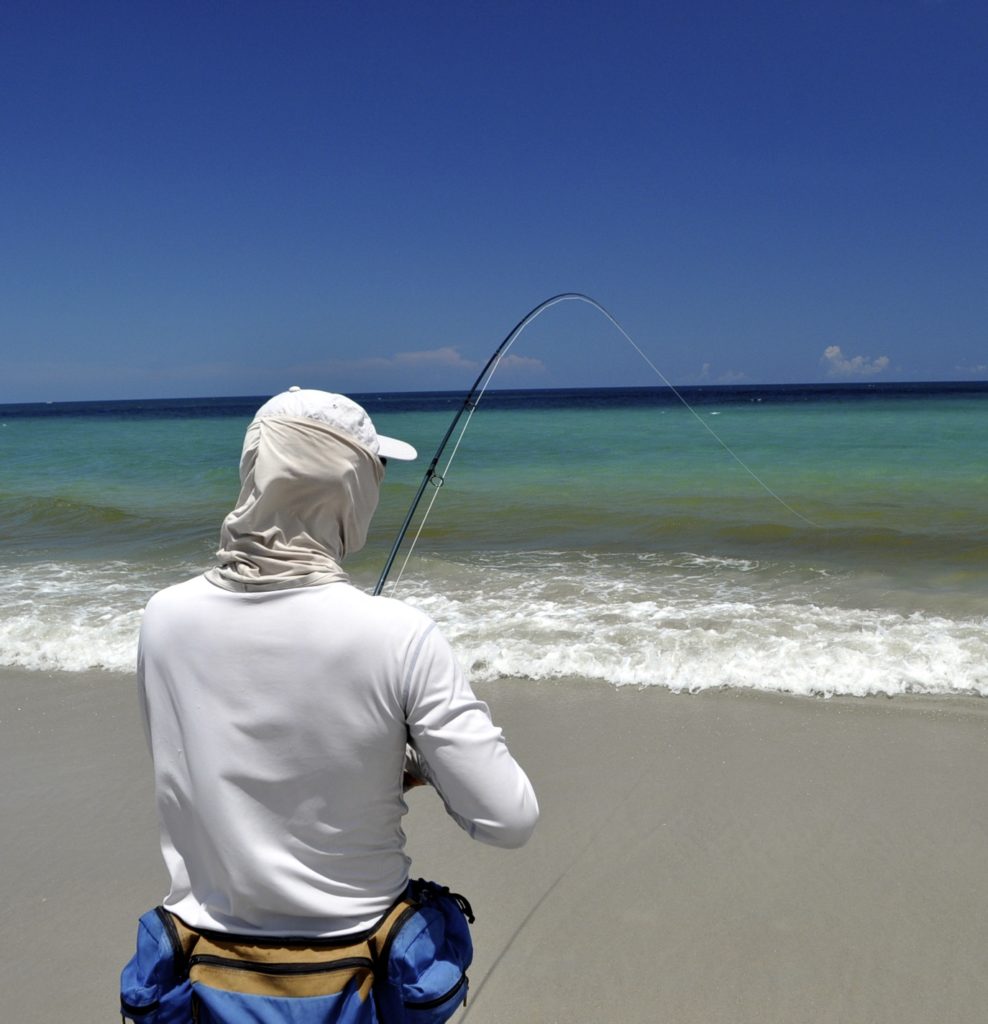
SIGHT-FISHING
Sight-fishing for pompano is most productive either from a skiff or on foot. The skiff gives you a height advantage to spot fish from farther away, over sand, shell, or mixed grass bottom, even with less than perfect sunlight. On foot, however, you are able to get closer to these wary fish.
Occasionally, pompano schools push wakes in water knee-deep or shallower. Some days, they push along the surface, especially if there are glass minnows around. Yes, they do eat small baitfish when crabs, tiny clams or shrimp aren’t available. Like permit or bonefish, their silvery, mirror-like sides reflect the bottom, so they are tough to spot. It’s when they are heading toward you that their darker backs tend to give them away, and their darker forked tails give them away, too. Either way, they don’t linger long. They seem to be always in high gear, so you have to be ready to cast.
When you see a fish or group of fish following the fly, let it sink to bottom. Like permit, pompano will pin it to the bottom and eat. But don’t be too concerned about retrieval rate. Pompano are fast and like to chase food down. And while they are often skittish, they sometimes eat a fly right at the boat. So keep stripping because you never know.
Should you see stingrays on a flat, watch for any pompano in tow. A mudding ray attracts them, and a manatee lumbering along can be a real magnet. In fact, when the manatee is fanning the bottom in shallow water, pomps love to pick off the goodies it flushes out of the grass. Just be sure not to get too close to the animal, they are protected. If pompano are present, a cast behind the beast will not be ignored.
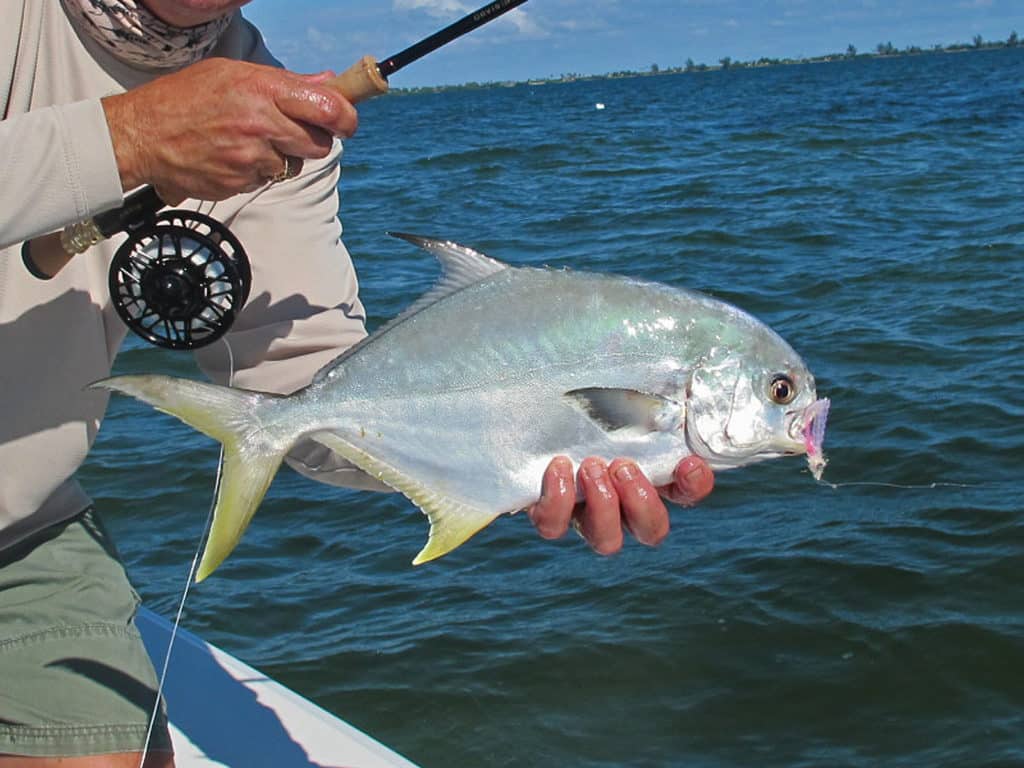
CHUMMING
Pompano respond well to chum, they have a terrific nose and come running once the pick up the scent. I place crushed sand fleas, shrimp or crabs in a PVC tube to help keep the fish near the boat or to spark action on slow days. In more than one occasion, I’ve watched a group of pomps swim right up to the chum tube laying on the bottom, a scant 15 feet from my boat cleat, and push it with their noses! Chum, definitely works, but keep in mind that it will draw other fish, too. Including an occasional shark that will not be welcomed by the pompano.









